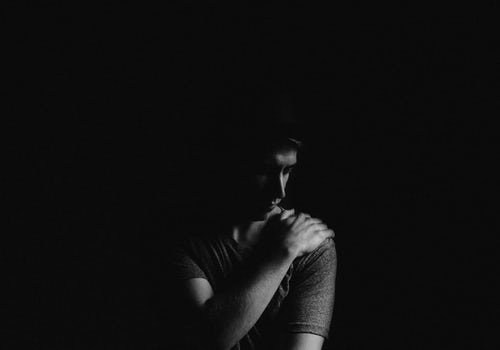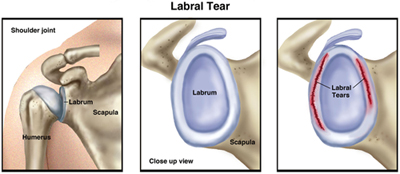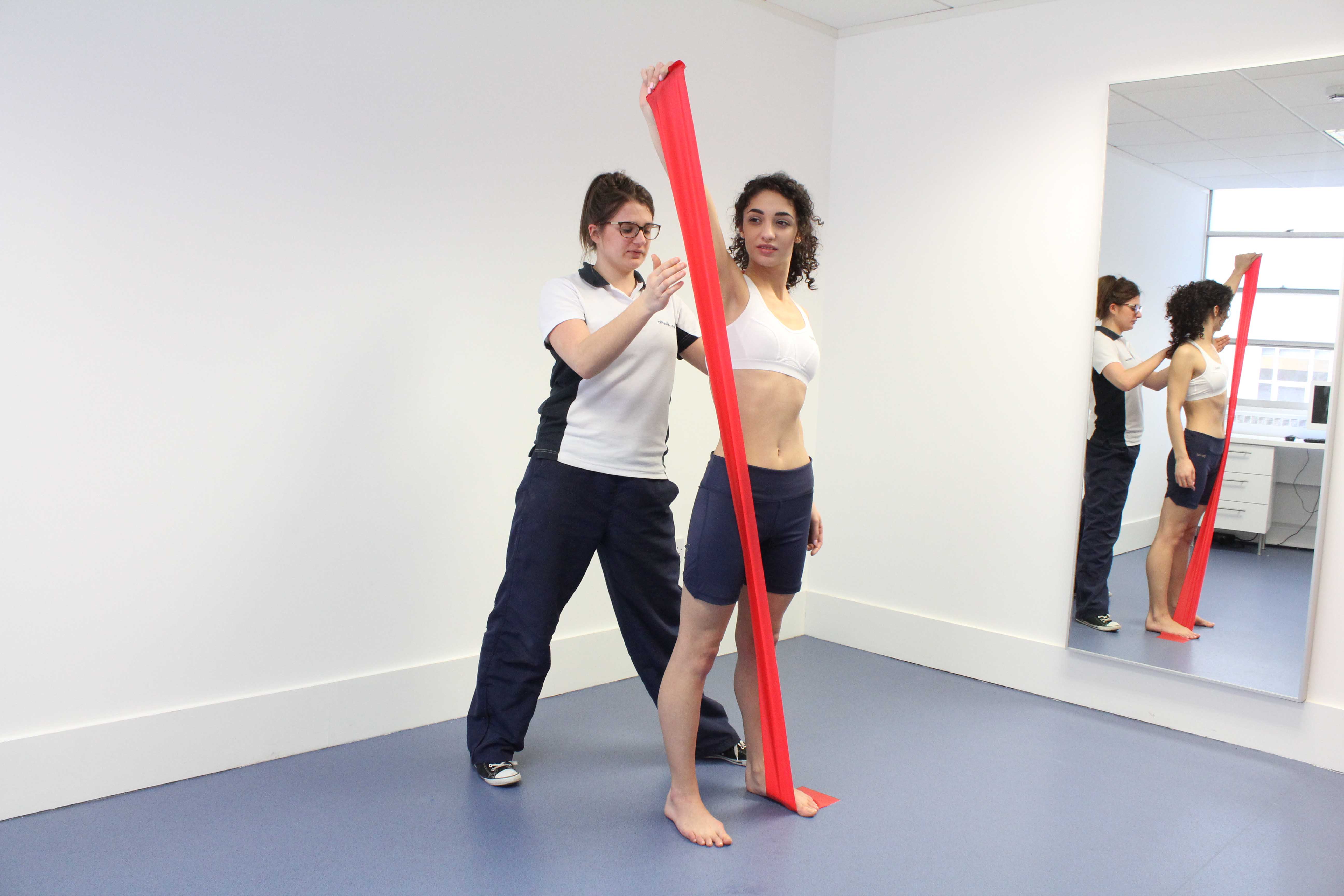nalco group
bone, muscle & joint pain physio
BOOK NOW / WHATSAPP ABOUT YOUR PAIN OR INJURY
- NOVENA 10 Sinaran Drive, Novena Medical Center #10-09, Singapore 307506
- TAMPINES 9 Tampines Grande #01-20 Singapore 528735
- SERANGOON 265 Serangoon Central Drive #04-269 Singapore 550265
Home > Blog > Physiotherapy > Shoulder Pain > Shoulder Labral Tear Physiotherapy
Shoulder Labral Tear Physiotherapy

An unstable shoulder joint can be the cause or the result of a labral tear.
"Labral" here refers to the ring of cartilage (glenoid labrum) that surrounds the base of the shoulder joint. Unfortunately injuries to the labrum are common, can cause a great deal of pain, and may make it hard to move your arm.
A labral tear can happen from
- a fall
- or from repetitive work
activities
- or sports that require you to use your arms raised above your
head (such as baseball or cricket)
Some labral tears can be managed with shoulder physiotherapy; and in severe cases, surgery may be required to repair the torn labrum.
What is a Shoulder Labral Tear?
The ring of cartilage called the glenoid labrum provides extra support for the shoulder joint, helping the shoulder joint to keep it in place. A shoulder labral tear occurs when part of this ring is
- disrupted
- frayed
- or torn
Tears may lead to shoulder pain, an unstable shoulder joint, and, in severe cases, dislocation of the shoulder. Also, a shoulder dislocation can cause labral tears.
When you think of the shoulder joint, you can imagine a golf ball (the head of the upper-arm bone, or humerus) resting on a golf tee (the glenoid fossa, a shallow cavity or socket located on the shoulder blade, or scapula).
The labrum provides a rim for the socket (golf tee) so that the humerus (golf ball) does not easily fall off. If the labrum is torn, it is harder for the humerus head to stay in the socket. The end result is that the shoulder joint becomes unstable and prone to injury.
And because the biceps tendon attaches to the shoulder blade through the labrum, labral tears can also happen when you put extra strain on the biceps muscle, such as when you throw a ball. Tears also can result from pinching or compressing the shoulder joint, when the arm is raised overhead.
There are 2 types of labral tears:
Traumatic labral tears usually occur because of a single incident, such as a shoulder dislocation or an injury from heavy lifting. People who use their arms raised over their heads—such as
- weight lifters
- gymnasts
- and construction workers
—are more likely to experience traumatic labral tears.
Activities where the force occurs at a distance from the shoulder, such as striking a hammer or swinging a racquet, can cause a traumatic labral tear. Falling on an outstretched arm also can cause this type of tear.
Nontraumatic labral tears most often occur because of muscle weakness or shoulder joint instability.
When the muscles that stabilize the shoulder joint are weak, more strain and stress is placed on the labrum, leading to an eventual tear. People with nontraumatic tears tend to have more "looseness" or greater mobility throughout all their joints, which also may be a factor in the development of a shoulder labral tear.

How Does a shoulder labral tear Feel like?
A shoulder labral tear may cause you to feel:
- Pain over the top of your shoulder
- "Popping," "clunking," or "catching" with shoulder movement, because the torn labrum has "loose ends" that are flipped or rolled within the shoulder joint during arm movement, and may even become trapped between the upper arm and shoulder blade
- Shoulder weakness, often on one side
- A sensation that your shoulder joint will pop out of place
How Is It Diagnosed?
Not all shoulder labral tears cause symptoms.
In fact, when labral tears are small, many people can continue to live life and function without any symptoms. However, healing may be slow and difficult due to the lack of blood supply available to a torn labrum. The shoulder with a labral tear may pop or click without being painful, but if the tear progresses, it is likely to lead to pain and weakness.
If our senior physiotherapists suspects that you have a labral tear, we will review your health history and perform an examination that is designed to test the condition of the glenoid labrum.
The tests will place your shoulder in positions that may recreate some of your symptoms, such as "popping," "clicking," or mild pain, to help your physical therapist determine whether your shoulder joint is unstable.
Magnetic resonance imaging (MRI) also may be used to complete the diagnosis.
Some labral tears may be difficult to diagnose
with certainty without arthroscopic surgery. We may
consult with an orthopedic surgeon if necessary for the best outcome for your painful shoulder injury.
how our senior physiotherapists can help
When shoulder labral tears cause minor symptoms but don’t cause shoulder instability, they usually are treated with shoulder physiotherapy. We will educate you about positions and activities to avoid, and tailor a treatment plan for your recovery.
Your shoulder physiotherapy treatment may include:
Manual therapy
We may provide gentle manual (hands-on) therapy to decrease your pain and begin to restore movement in the shoulder area.
Strengthening exercises
Improving the strength of the muscles of the shoulder will help you decrease the stresses placed on the torn labrum and allow for better healing.
We may design rotation exercises that target the muscles of the shoulder joint, and shoulder-blade (scapular) exercises to provide stability to the shoulder joint itself.

Stretching exercises
An imbalance in the muscles or a decrease in flexibility can result in poor posture or excessive stress within the shoulder joint. We may prescribe stretching exercises—such as gentle stretches of the chest (pectoralis) muscles—to improve the function of the muscles surrounding the shoulder.
We also may introduce middle-back (thoracic) stretches to allow your body to rotate or twist to the side, so the shoulder joint doesn’t have to stretch further to perform tasks, such as swinging a racquet or golf club.
Postural exercises
We will assess your posture, and teach you specific exercises to ensure your shoulders are positioned properly for daily tasks. A forward-head and rounded-shoulder posture puts the shoulders at risk for injury.
Education
Education is an important part of any physical therapy treatment plan. We will help you understand your injury, the reasons for modifying your activities, and the importance of doing your exercises to decrease your risk of future injury.
Following Surgery
In more severe cases, when conservative treatments are unable to completely relieve the symptoms of a labral tear, corrective shoulder labral surgery may be required to reattach the torn labrum.
Following surgery, our senior physiotherapists will design a treatment program based on your specific needs and goals, and work with you to help you safely return to your daily activities.
A surgically repaired labrum takes 9 to 12 months to completely heal. Immediately following surgery, we will provide post-surgery physiotherapy and teach you ways to avoid putting excessive stress or strain on the repaired labrum.
As the labrum heals, we will introduce resistance and strengthening exercises, such as those listed above, to your treatment plan, to address your specific needs, and help you slowly and safely return to performing daily tasks that require force or lifting.
We're trained to gradually introduce movements in a safe manner to allow you to return to your usual activities without reinjuring the repaired tissues.
